We could start this text by describing all his records, brands, titles, achievements, legends, stories, curiosities, controversies, scandals, successes, failures and countless goals. But from now on this will be the easiest thing to find on the internet and social networks.
The hardest thing will be to be able to tell His definitive story, or even a balanced one, without the gaze of an ardent fan who forgives everything to the idol, or leaving aside all the rancor of those who elected Him as a negative symbol of so many ills that plague Brazil in particular.
Perhaps the best option is to make a very particular cut, in our case, reducing time and space to the period of existence of the Football Museum, inaugurated on September 29, 2008, with the exhibition “As Marcas do Rei” (in a free translation, “The marks of the King”). Curiously, it is not considered to be our first temporary exhibition, as it was already touring the country, so it was not curated by this museum.
But who says the King cares about these details? As the photo below shows, there He was, friendly and attentive to his surroundings.
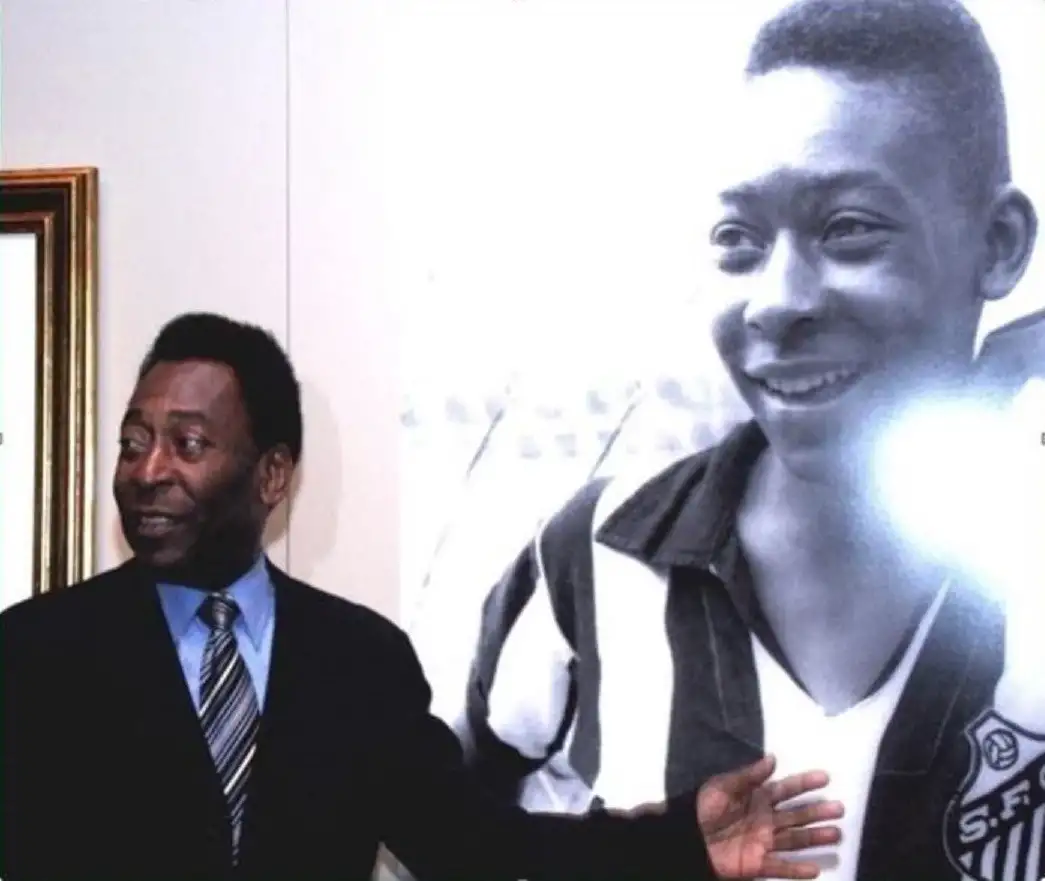
n fact, this is perhaps the greatest characteristic of His reign. Always helpful, always surrounded by people, always having his name shouted out. All for a photo and an autograph. We don’t remember images of him surrounded by angry crowds, cursing at him and demanding that he behave in one way or another. And there’s no shortage of examples of people who have the knack of driving people out of their homes just to cause a stir with insults.
And during His visit, He saw himself in almost every room, starting with the Big Area, where he remembered, or perhaps saw himself for the first time, on a stamp, on the cover of a sticker album, in a caricature or as a doll.

He was then welcomed by himself in Portuguese, English and Spanish. He found himself floating in the Hall of Baroque Angels alongside several friends, also world champions. In Gols and Radio he heard His name in the voice of Édson Leite, Fiori Gigliotti and Waldir Amaral. But curiously, he discovered that no one cited one of his 1,282 goals as a favorite or a highlight. But he wasn’t totally forgotten, becoming a luxury supporting player in the memories of Armando Nogueira and Marcelo Tas at the 1970 World Cup and of Corinthians player Juarez Soares, on a taboo-breaking afternoon in 1968…

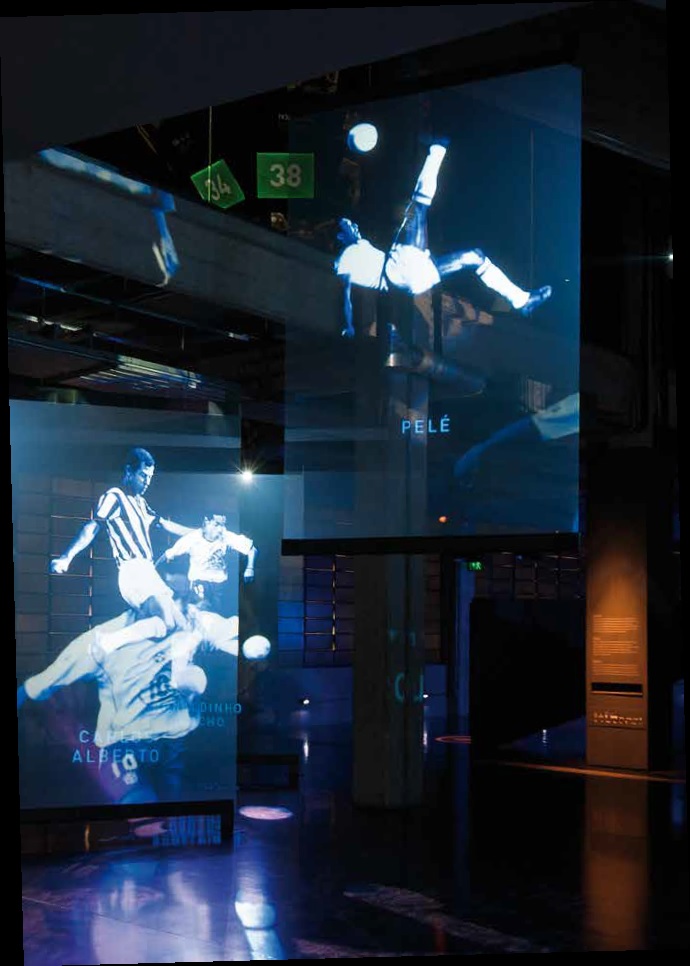
But if He ever had any doubts about his importance to the history of football, it was certainly on the second floor of the Football Museum where they ended. In the World Cup Room, you can see images from the 1958, 1962 and 1970 World Cups. He was surprised to see one of the number 10 shirts worn in the Mexican Cup final 38 years later. And he discovered that he shares space with Garrincha. The only ones who had the privilege of naming a room.
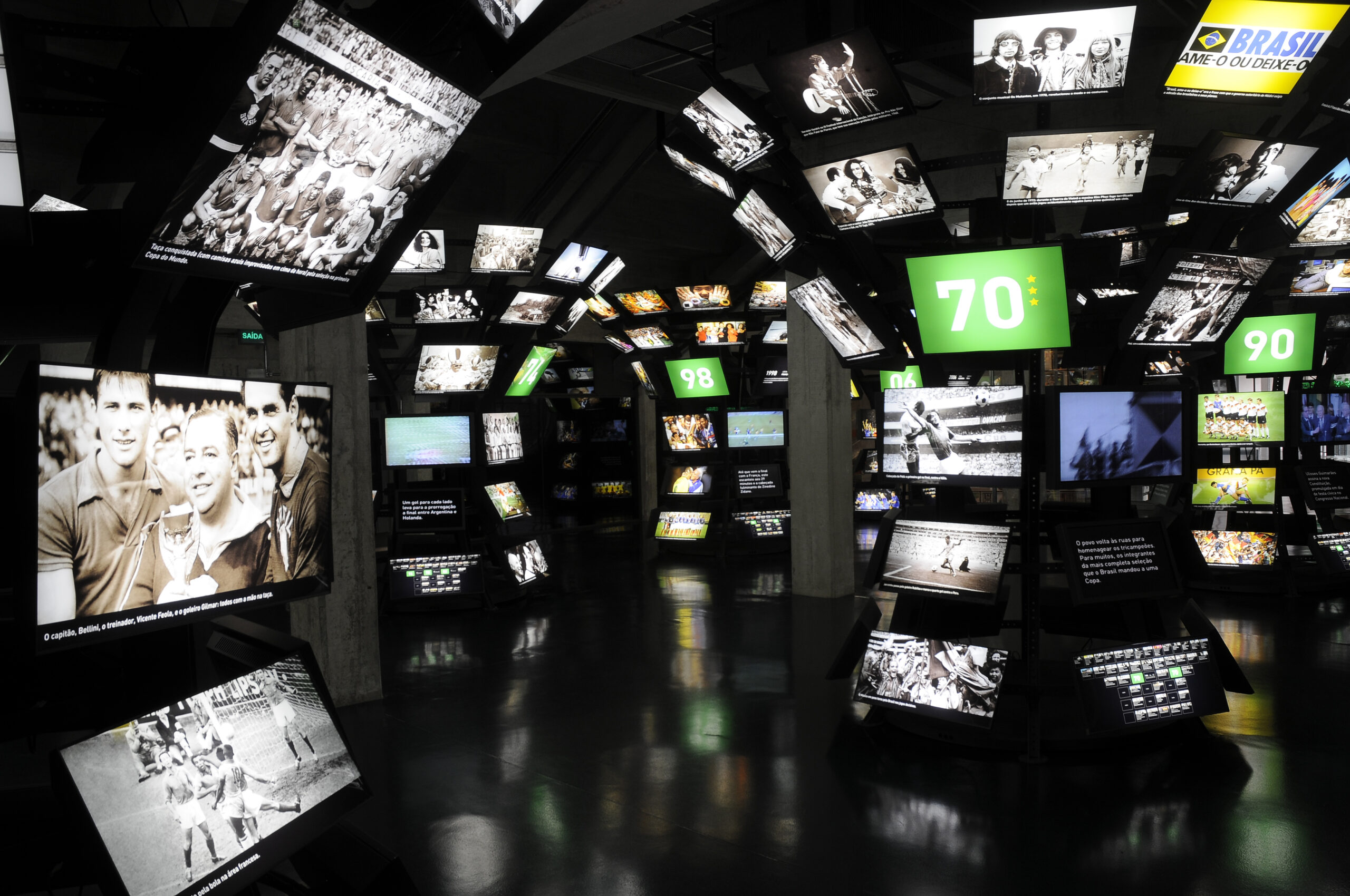
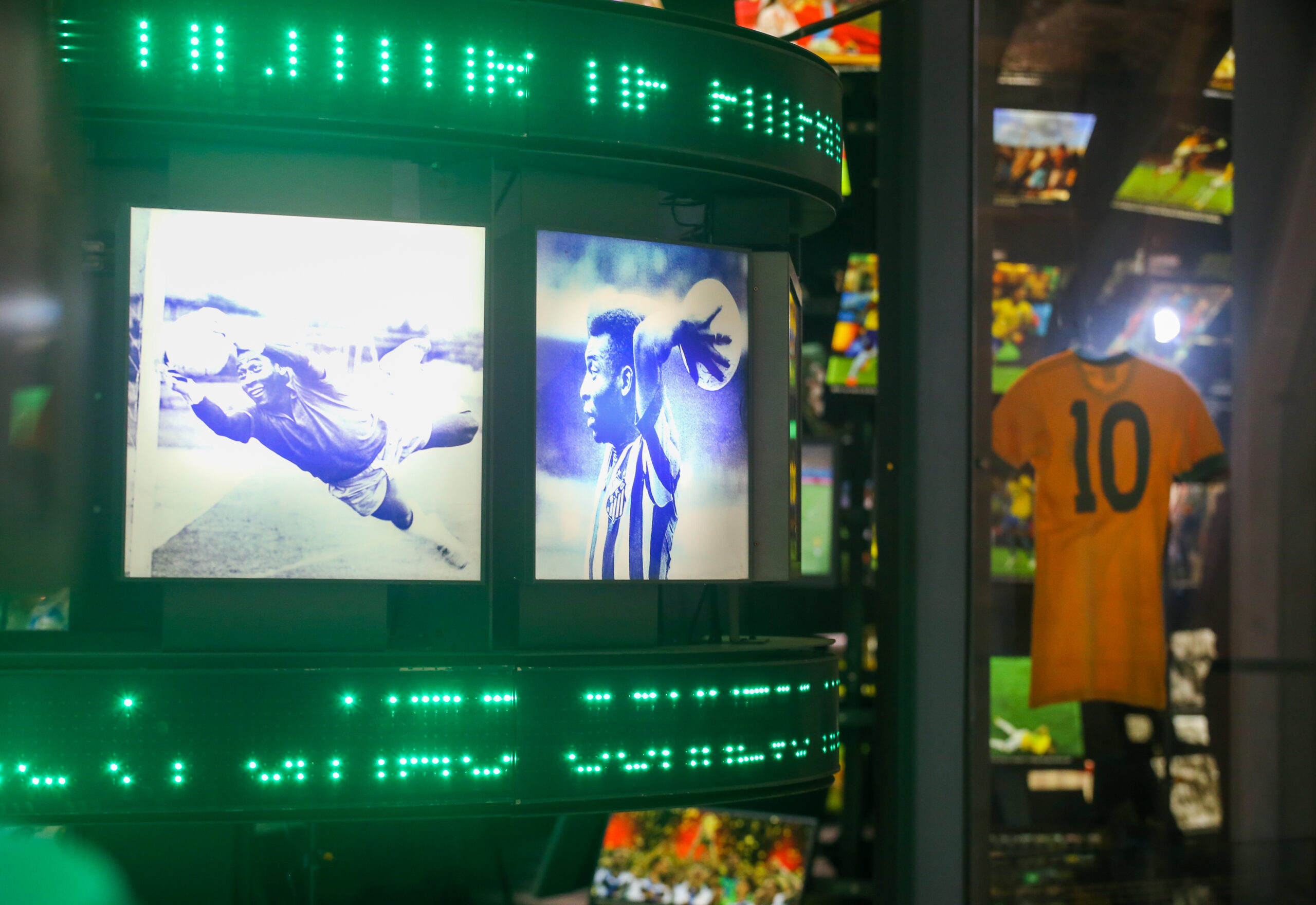
Continuing his walk, he passed the wooden walkway and entered Numbers & Curiosities, where he saw the plaque that registered his record number of goals. Finally, he reached the Football Dance Room where he saw some of those 1,282 goals on Channel 100.
After seeing so much of Himself, it’s not surprising that He hasn’t been back to the Football Museum very often. In fact, he only returned in 2012 to see his friend Maurício de Sousa at an event at the Armando Nogueira Auditorium to relaunch the Pelezinho character.
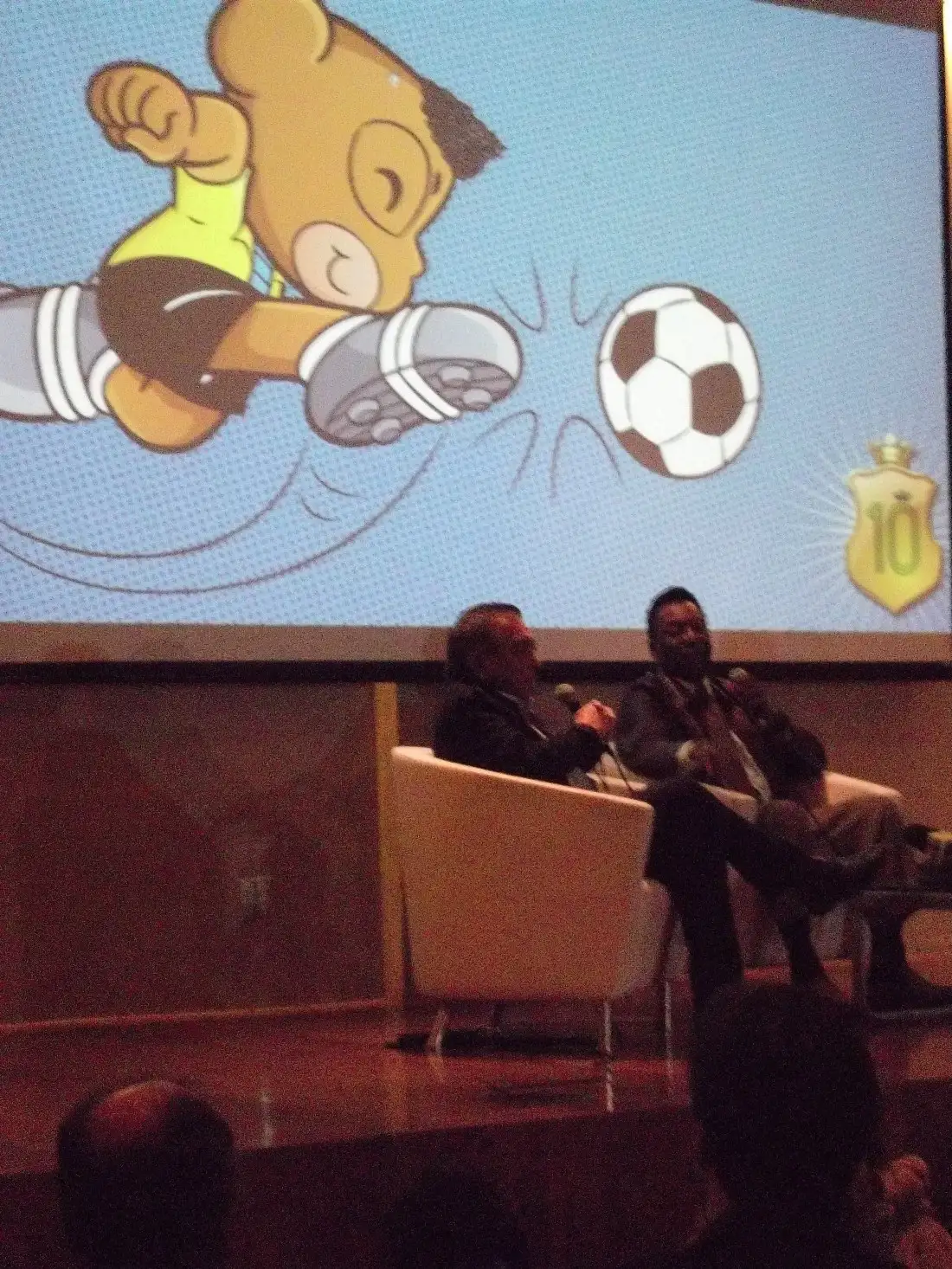
After this, the relationship with the Football Museum ceased to be face-to-face and moved into the museum field. In 2014, the Pelé Museum was inaugurated in Valongo, Santos, with an exhibition of objects from the King’s personal collection, many of which were in the “Marcas do Rei” exhibition. In December of that year, the CRFB and the Rede Memória do Esporte paid a technical visit.
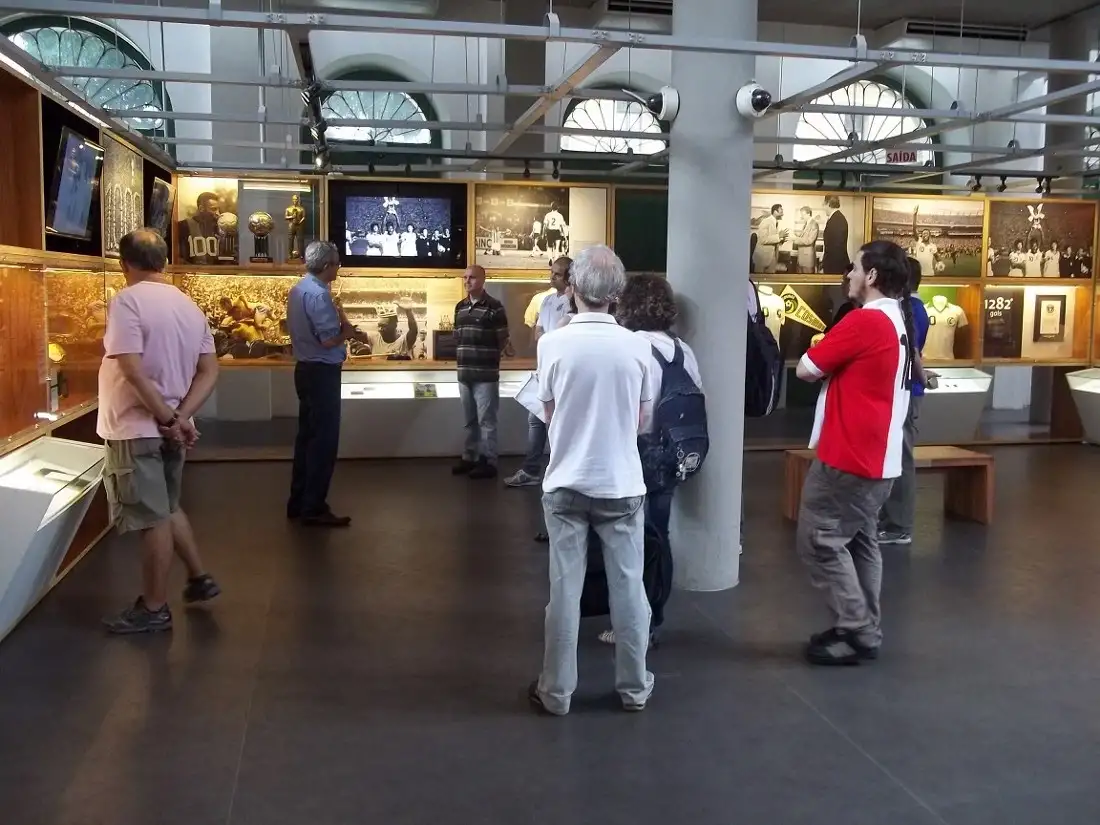

Between January and April 2016, the Pelé Museum hosted the traveling exhibition “Museu do Futebol na Área” (in a free translation, “Football Museum in the Area”), which reproduced the Rooms of Origins, Numbers and Curiosities, Goals, Radios and Cups, but with an emphasis on the history of Santos football and, of course, the eternal number 10 of Santos F.C. In fact, for this exhibition the CRFB obtained a historic shirt worn by Ele in the decisive match of the 1969 Campeonato Paulista (São Paulo State’s Championship).
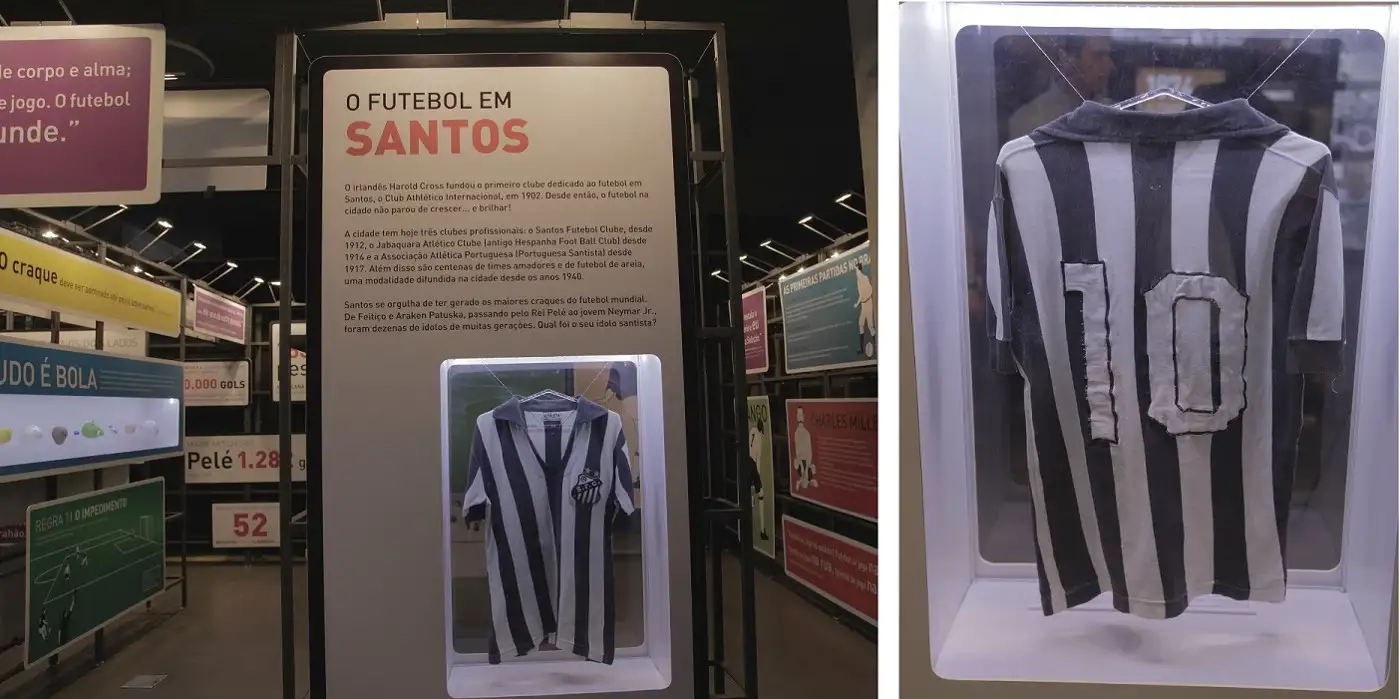
In 2018 it was the women’s turn to occupy space at the Pelé Museum, with the exhibition “Visibility for Women’s Football”, originally created in 2015 by the Football Museum and which became itinerant in 2016, consisting of 11 panels and three videos, which told the erased story of the origins of Brazilian women’s football.
In November 2019, on the occasion of the 50th anniversary of the Thousandth Goal, the Football Museum opened the “Pelé 1,000 Goals” installation, in which J.C.’s Lobo (1934–2016) cartoons were exhibited, which portrayed the King of Football’s entire career, and a documentary showing the expectation surrounding the brand through newspaper headlines. The series “Memórias do Milésimo” (Memories of the Thousandth), produced by the ESPN channel, was also shown in the “Jogo de Corpo” (Body Feint) Room.
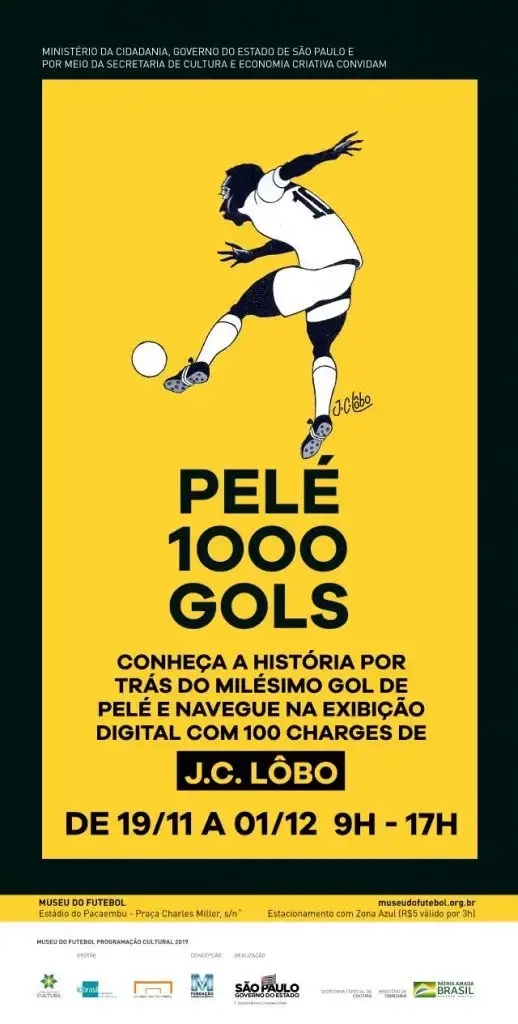
Finally, in 2020, after being closed for almost seven months due to the COVID-19 pandemic, the Football Museum reopened its doors with the temporary exhibition “Pelé 80 — O Rei do Futebol” (“Pelé 80 — The King of Football”), a tribute to the King of Football and a playful experience recalling his life full of challenges and achievements, while presenting his story to new generations. Of the eight installations, the highlight was the 444 images displayed and the installation “O Brasil Ama o Rei Pelé” (“Brazil Loves King Pelé”, in which 35 fans had the opportunity to talk about Him.
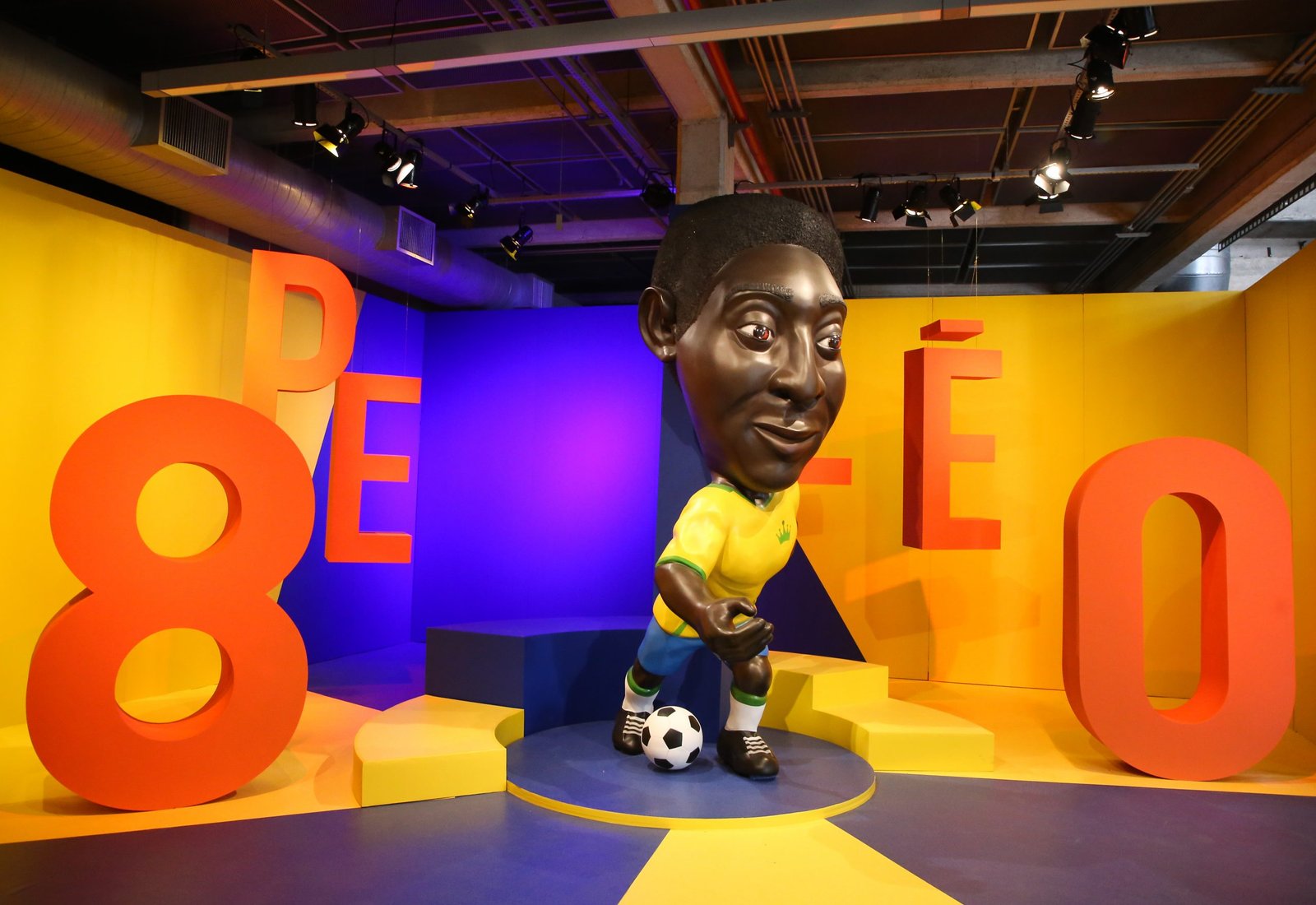
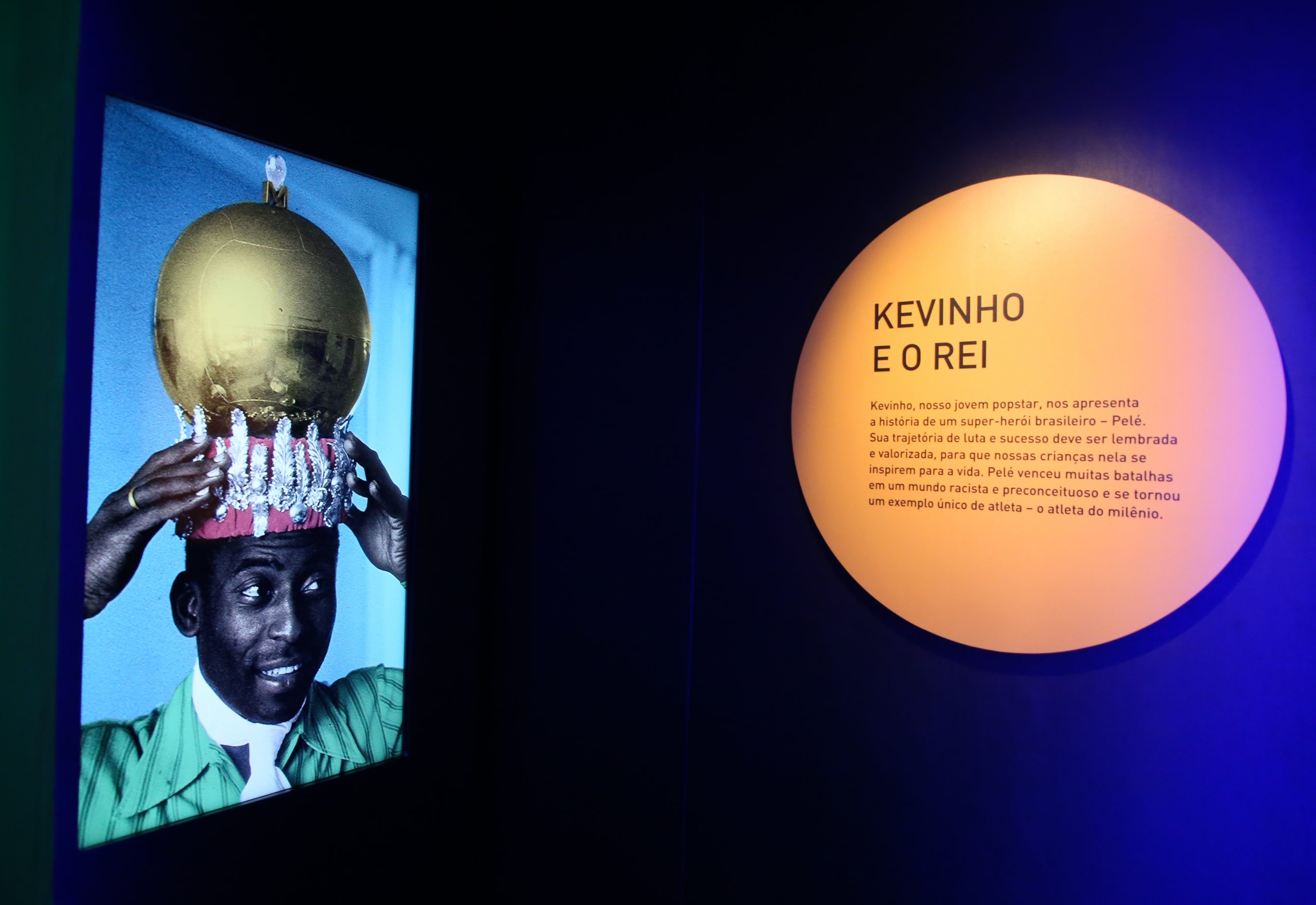
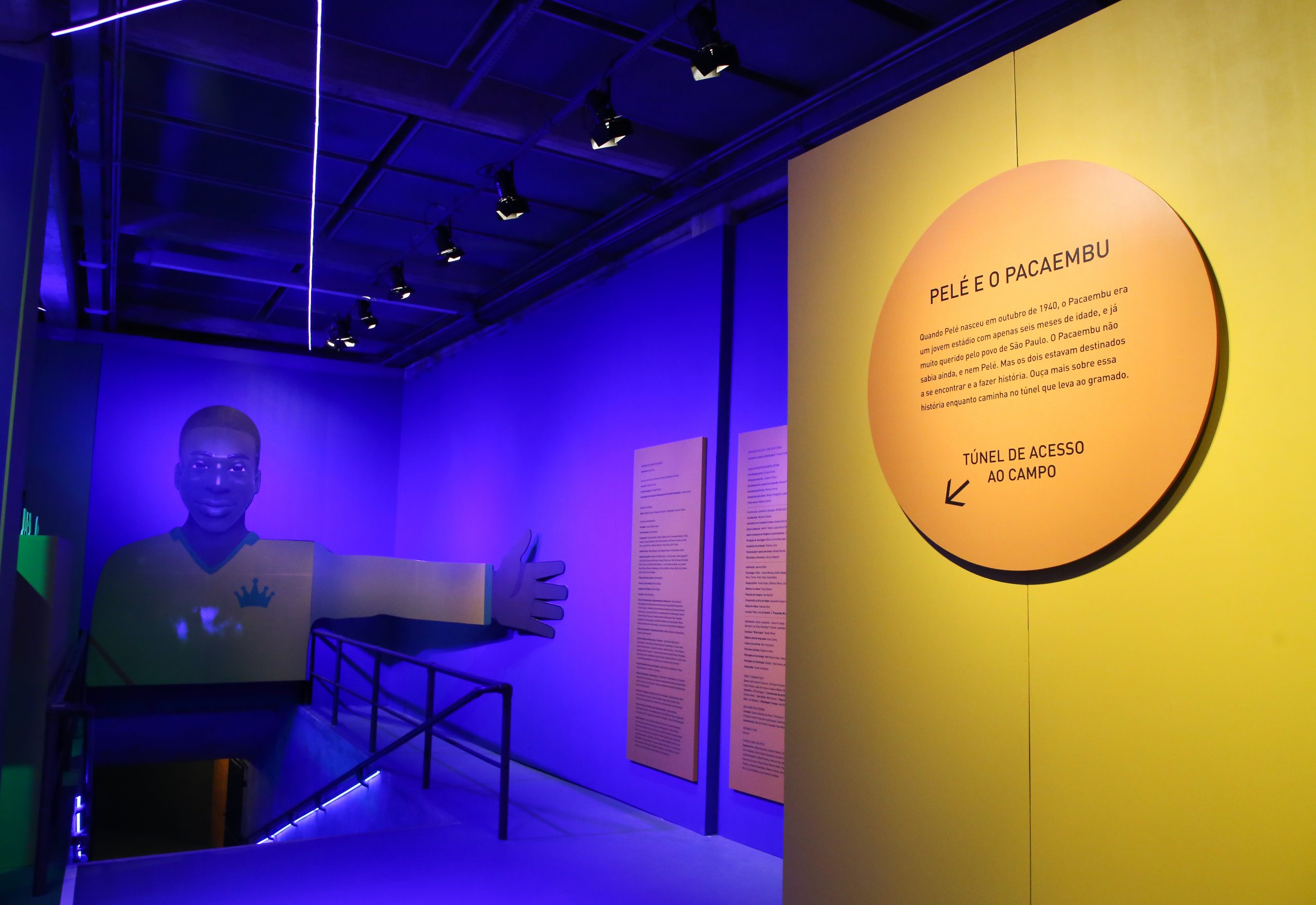
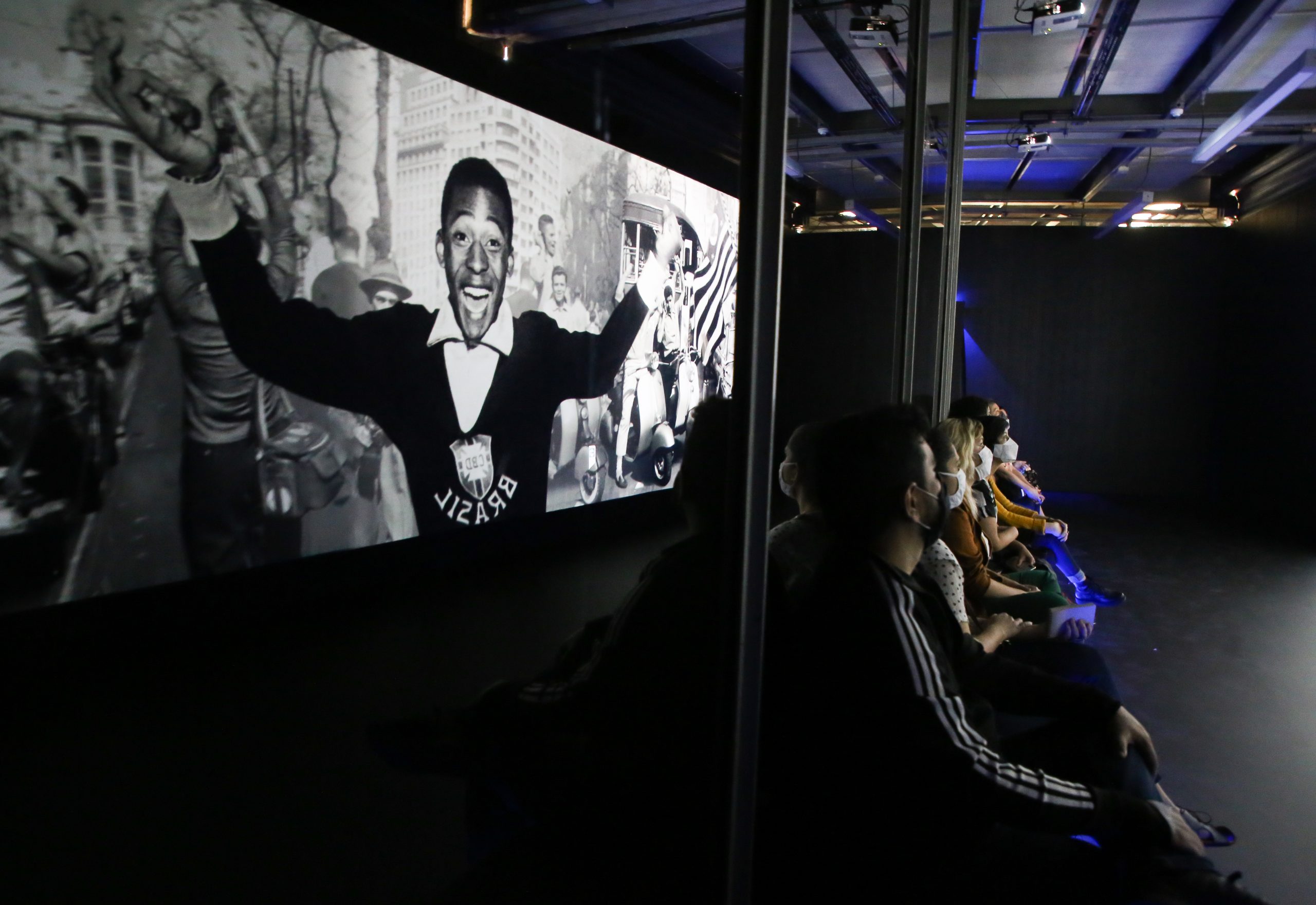
But the big hit was a miniature sculpture of him by curator Gringo Cardia, displayed right at the entrance to the exhibition. She received two interventions that generated great repercussions, the first when a black armband was put on, shortly after the death of Diego Maradona. The second was when it was given a mask to help make visitors aware of the importance of wearing it to combat Covid contamination at the time.
After the end of the exhibition, the sculpture was donated to the Pelé Museum. It’s only fair.
It’s only been a few times, but for each of them, thank you very much, Pelé!
The Royal Bibliography at CRFB
ARANTES, Thiago. Os dez mais do Santos. Rio de Janeiro: Maquinária, 2012. 184 p.
BARBOSA, Benedito Ruy. Primeiro tempo. São Paulo: Magma Cultural, 2011. 320 p.
BARBOSA, Gino Caldatto; MEDEIROS, Marjorie de Carvalho Fontenelle de; BARBOSA, Ney Caldatto. Museu Pelé: restauração e legado; Pelé Museum: restoration and legacy. São Paulo: Magma Cultural, 2014. 203 p.
BARRETO, Marcelo. Os 11 maiores camisas 10 do futebol brasileiro. São Paulo: Contexto, 2010. 256 p.
BASTHI, Angélica. Pelé: estrela negra em campos verdes. Rio de Janeiro: Garamond, 2008. 196 p.
CAMPOS JUNIOR, Celso de. As joias do Rei. Santos: Realejo, 2013. 189 p.
CAMPOS JUNIOR, Celso de. As joias do Rei. 2ª edição — Santos: Realejo Livros, 2019. 184 p.
CASTELLO, José. Pelé: os dez corações do rei. Rio de Janeiro: Ediouro, 2004. 231 p.
CASTRO, Marcos de; MAXIMO, João. Gigantes do futebol brasileiro. Rio de Janeiro: Lidador, 1965. 320 p.
CASTRO, Marcos de; MAXIMO, João. Gigantes do futebol brasileiro. 2ª edição — Rio de Janeiro: Civilização Brasileira, 2011. 450 p.
CHAMOIN, Marcelin. Pelé & Garrincha: le roi et la joie du peuple. Paris: Edição do Autor, 2018. 166 p.
CODDOU H., Reinaldo. O jogo bonito: Brasilien: eine fussballverrückte nation in bildern. Mannheim: Spielmacher, 2013. 240 p.
CORDEIRO, Luiz Carlos. De Edson à Pelé: a infância do Rei em Bauru. São Paulo: DBA, 1994. 128 p.
CUNHA, Odir. Donos da terra: a história do primeiro título mundial do Santos. São Paulo: Realejo, 2007.
CUNHA, Odir; FERNANDES, Marcelo Lúcio. Santos F.C.: o maior espetáculo da Terra. São Paulo: Onze Cultural, 2018. 352 p.
CUNHA, Odir. Segundo tempo: de ídolo a mito. São Paulo: Magma Cultural, 2014. 320 p.
DE VANEY. A verdade sobre Pelé: as fantasias, os exageros, o mito, as histórias de um desertor. São Paulo: Companhia Lytographica Ypiranga, 1976. 300 p.
DONALD, Michael. Goal!: intimate portraits and interviews with every living FIFA World Cup Final scorer. London: Hamlyn, 2017. 224 p.
DUARTE, Orlando; SEVERINO FILHO. Fried versus Pelé. São Paulo: Makron Books, 2001. 144 p.
FERRARI, Eduardo. Mineiros na Copa: da primeira participação ao Mineiraço. Belo Horizonte: Scrittore, 2014 236 p.
FISCHER, Gerd; ROTH, Jürgen. Ballhunger: vom mythos des brasilianischen fussballs. Göttingen: Verlag Die Werkstat, 2005. 296 p.
JÖNSSON, Henrik Brandão. Jogo bonito: Pelé, Neymar and Brazil’s beautiful game. London: Yellow Jersey Press, 2014. 288 p.
KOWET, Don. Pelé. New York: Atheneum, 1976. 129 p.
MARIO FILHO. Viagem em torno de Pelé. Rio de Janeiro: Editora do Autor, 1963. 353 p.
MONTE ALTO, Cristiana; ZARVOS, Claudia (coord.). Pelé: a arte do Rei. São Paulo; Rio de Janeiro: MASP; Fundação Casa França-Brasil, 2002. 79 p.
MORAES, Mario de. Futebol é arte: parte I. Rio de Janeiro: MIS, 2002.
MOSTARO, Filipe. Garrincha X Pelé: a influência da mídia na carreira do jogador. Juiz de Fora: Autor, 2012.
MUYLAERT, Roberto et al. Pelé 70. São Paulo: Brasileira, 2009. 162 p.
NASSER, Carlos. Jogadores eternos: a história do futebol através de entrevistas. Ribeirão Preto: Novo Conceito, 2014. 240 p.
PATARRA, Paulo (coord.). A Seleção Brasileira de todos os tempos. São Paulo: Abril, 1969. 164 p.
PELÉ. Eu sou Pelé. Rio de Janeiro: Francisco Alves, 1961. 191 p.
PELE. Pelé: minha vida em imagens. São Paulo: Cosac Naify, 2010. 150 p.
PELE; MORRISON, Frank. Por amor ao futebol!. São Paulo: Companhia das Letrinhas, 2010. 40 p.
PELE; WINTER, Brian. Pelé: a importância do futebol. Santos: Realejo, 2014. 220 p.
PELE; WINTER, Brian. Why soccer matters. Londres: Celebra, 2014. 304 p.
PELE [com MAZZEI, Júlio; CARBONI, Massimo Marconi]. Jogando com Pelé. Rio de Janeiro: José Olympio, 1974. 114 p.
PELE [com FISH, Robert L.]. My life and beautiful game. New York: Warner Books, 1977. 371 p.
PELE [com DUARTE, Orlando; BELLOS, Alex]. Pelé: a autobiografia. São Paulo: Sextante, 2006. 298 p.
PELE [mit DUARTE, Orlando; BELLOS, Alex]. Mein leben. Frankfurt am Main: Scherz, 2006. 285 p.
PINHEIRO, Domício (org.). Era Pelé: documento histórico-fotográfico da vida do maior jogador de futebol de todos os tempos. São Paulo: Seqüencial, 1984. 386 p.
POLIDORO JÚNIOR. Um jogo inesquecível: Avaí 1X2 Santos: 15 de agosto de 1972. Florianópolis: Mix Mídia, 2013. 79 p.
RODRIGUES, Milton. Avenida da saudade: o América de Rio Preto na Era Pelé. São José do Rio Preto: Mundial, 2004. 110 p.
ROSA, Bruno Navarini. A jornada do herói de Joseph Campbell e os ídolos do futebol brasileiro: uma análise de “Garrincha, alegria do povo” e “Isto é Pelé”. 2017. Dissertação (Mestrado em Comunicação) — Programa de Pós-Graduação em Comunicação da Faculdade de Arquitetura, Artes e Comunicação da Universidade Estadual Paulista “Júlio de Mesquita Filho”, Bauru. 119 f.
SÁNCHEZ VEGARA, María Isabel; ROSA, Camila (il.). Gente pequena, grandes sonhos: Pelé. Cotia: Catapulta, 2021. 31 p.
SEVERINO FILHO. Diário do Rei: as datas na história do maior futebolista de todos os tempos. Teresina: Edição do Autor, 2022. 215 p.
SILVA, Ana Paula da. Pelé, o complexo de vira-latas: discurso sobre raça, modernidade no Brasil. Niterói: Eduff, 2014. 194 p.
SILVA, Ana Paula da. Pelé e o complexo de vira-latas: discursos sobre raça e modernidade. 2008. Tese (Doutorado em (Antropologia Cultural) — Instituto de Filosofia e Ciências Sociais, Universidade Federal do Rio de Janeiro, Rio de Janeiro. 229 f.
SOUSA, Maurício de. As tiras clássicas do Pelezinho volume 1. São Paulo: Panini, 2012. 126 p.
SOUSA, Maurício de. As tiras clássicas do Pelezinho volume 2. São Paulo: Panini, 2013. 126 p.
SOUZA, Denaldo Alchorne de. Pra frente, Brasil!: do Maracanazo aos mitos de Pelé e Garrincha, a dialética da ordem e da desordem (1950–1983). São Paulo: Intermeios, 2018. 320 p.
TREVILLION, Paul. ‘King’ Pele. Londons: Stanley Paul & Co. 1971. 93 p.
TRINDADE, Fernando; ORLANDO, Matheus Ramalho. Pelé X Bauru: a relação de amor e desamor entre o Rei do Futebol e a Cidade Sem Limites. 2012. Trabalho de Conclusão de Curso (Bacharelado em Jornalismo) — Universidade Estadual Paulista Júlio de Mesquita Filho, Bauru. 155 f.
XAVIER FILHO, Sérgio (dir.). Pelé, o atleta do século. São Paulo: Abril, 2000. 215 p.
Ademir Takara
Librarian at the Football Museum since 2011 and a “Pelezista” since then and forever.


